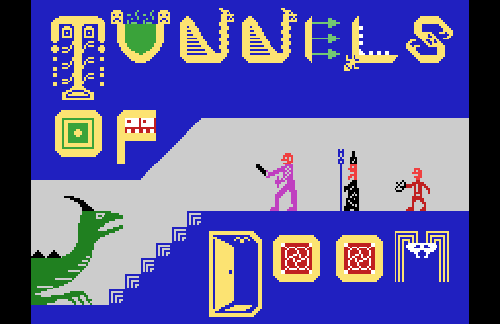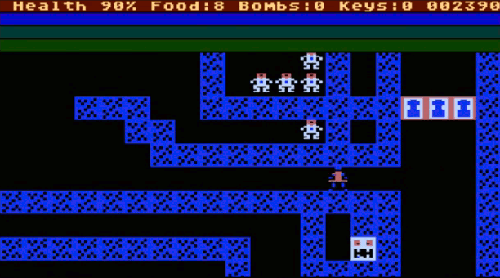Tunnels of Doom
A role playing game thick with strategy elements, Keven Kenney's 1982 release Tunnels of Doom was ahead of its time in a number of ways. One way it wasn't, though, was its choice of platform. Tunnels was released for the TI-99/4A, a computer system that had to compete with the likes of the Commodore 64. You might have some vague memories of Bill Cosby telling you to buy this computer back in the '80s. When he said "this is the one", though, he was wrong. The TI-99/4A never caught on, leaving games like Tunnels of Doom to wither into pixel dust.
After a lengthy setup process, Tunnels of Doom places your party of four in a first person dungeon on a quest to save the king and recover his Rainbow Orb or some such nonsense. Half your time will be spent wandering the nearly identical hallways as you desperately look for doors to enter. There is an automap feature, which was surprisingly futuristic for 1982, so you're not totally on your own. The other half of the time you'll be bumping into enemies, at which point the view changes to a grid and a turn-based strategic battle takes place.
Sadly, co-op was pretty minimal in Tunnels of Doom. The only thing players could do together was control their own characters in combat, taking turns sliding around the grid and doing their combat thing. At least now we know where Final Fantasy VI got its co-op idea from.
Dandy
Go ahead, make fun of the name. We certainly did! Dandy (or Dandy Dungeons, if you like) was basically Gauntlet two years before Gauntlet was Gauntlet. The primitive dungeon crawler was designed by John Palevish and released for Atari 8-Bit computers in 1983. Just like Gauntlet, players were tossed into maze-like levels with the goal of getting to the exit alive. Enemies spawned all over the place just begging to be shot by your crafty little arrows. Potions, food and keys were part of the experience, as was a level editor that allowed players to make their own stages and exchange them with other people. Far-out psychedelic, or whatever people said in 1983.
The best part is Dandy supported co-op for up to four players. The screen scrolled according to an average of each player's location, creating a pretty extreme atmosphere of cooperation. "Everybody stay together so we can actually see what we're doing, ok?" The original idea for Dandy was to have a fifth player acting as sort of a dungeon master, but time constraints prevented that role from ever being implemented.
Dandy was followed by Dark Chambers a few years later, though it only supported two player co-op. Gauntlet lives on to this day, and it even gets its own 2014 reboot.

